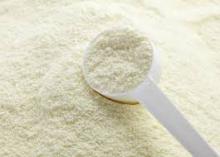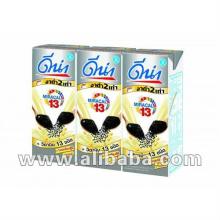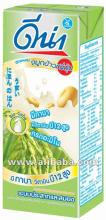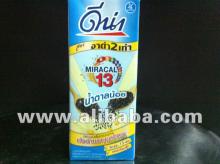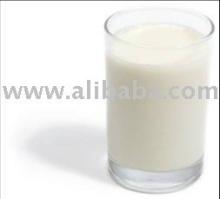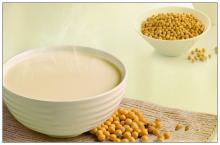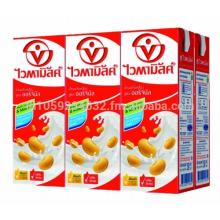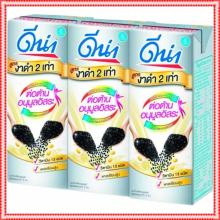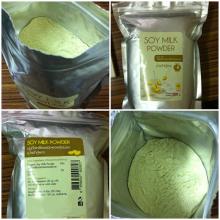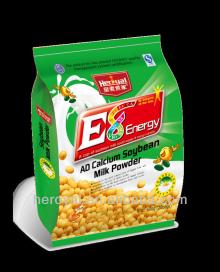Soy milk can be made from whole soybeans or full-fat soy flour. The dry beans are soaked in water overnight or for a minimum of 3 hours or more depending on the temperature of the water. The rehydrated beans then undergo wet grinding with enough added water to give the desired solids content to the final product. The ratio of water to beans on a weight basis should be about 10:1. The resulting slurry or purée is brought to a boil in order to improve its nutritional value by heat inactivating soybean trypsin inhibitor, improve its flavor and to sterilize the product. Heating at or near the boiling point is continued for a period of time, 15–20 minutes, followed by the removal of an insoluble residue (soy pulp fiber or okara ) by filtration.
There is a simple yet profound difference between traditional Chinese and Japanese soy milk processing: the Chinese method boils the filtrate (soy milk) after a cold filtration, while the Japanese method boils the slurry first, followed by hot filtration of the slurry. The latter method results in a higher yield of soy milk but requires the use of an anti-foaming agent or natural defoamer during the boiling step. Bringing filtered soy milk to a boil avoids the problem of foaming. It is generally opaque, white or off-white in color, and approximately the same consistency as cow's milk.
For all raw soybean protein products, heat is necessary to destroy the activity of the protease inhibitors naturally present in the soybean. The pancreas naturally secretes proteases to digest a protein meal. Eating raw soybeans on a regular basis causes the pancreas to hypersecrete, leading to benign tumors of the pancreas.
The soybean is considered a complete food because it contains protein, carbohydrates and fat, as well as an impressive array of vitamins and minerals including iron, phosphorus, magnesium, thiamine, riboflavin and niacin. Soy-based food comes in many varieties, from liquids such as soy milk and soy sauce to solids such as soy bean curd and noodles. People in the West see soy as a health food and as an alternative to cows’ milk.


